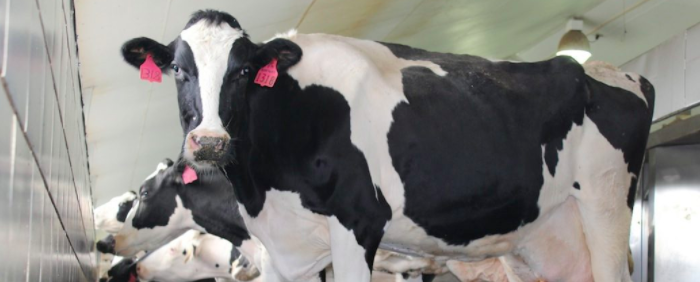
Milk and milk products cover a significant proportion in dietary pattern of large population of all ages. The rate with which our population is growing depicts that future demand for milk and milk products will increase substantially. Vision 2050 says that global demand for diary is projected to increase by 74 % and this increase will originate largely from developing countries. Annual demand for coarse grains for animal feed is also projected to increase over the period by 553 million tonnes, corresponding to approximately half of the total increase in demand (FAO, 2009). To meet the future demand, production of milk and meat, including milk production per lactating cow and daily weight gains for meat animals would need to be increased significantly if the available feed resources are to be sufficient. With the available resources, which are of course scarce, feed shortage will definitely take place. This will affect the productivity of milch animals. Therefore inorder to have sustainable and enhanced milk production with existing feed and animal resources, addressing the imbalanced nutrition is a must. The limited data on improving milk production efficiency in dairy animals through balanced feeding suggests that there is considerable scope for the enhancement of milk production with the existing feed and animal resources. This can be made possible through the transfer of scientific knowledge, in an easy to use and easy to implement manner to rural milk producers. The aim should be to promote feeding of a balanced ration in sufficient quantities and containing all essential nutrients. To promote this, various initiatives are taken by the Dairy Board of India.
Imbalanced feeding leads to excess feeding of some nutrient while deficient in some. A study conducted on cost and returns of milk production by Lal, P.(2015) in Sirsa district in Haryana shows that farmers were giving feed specially concentrate twice the recommended dose. It was found that cost of milk production was higher for these farmers. Thus imbalanced feeding not only increases the maintenance cost, but also leads to deficiency of some vital nutrient. To ensure improved productivity it is necessary to augment and secure feed resources through short and long term planning. It is also essential that milk producers feed their animals the nutrients in amounts that match the physiological needs and objective of keeping the animal. Since many smallholder farmers do not have the necessary skills and knowledge to prepare balanced rations, this can be achieved through providing ration balancing advisory services direct to the farmer through village based trained local resource persons.
Thus it is evident that milk producers could be advised to balance the ration of their animals using locally available feed resources with the help of software developed by NDDB using desktops, laptops or Personal Digital Assistants.
The programme comprises a feed data library and various ‘Nutrition masters’. To create the feed data library, a wide range of feed ingredients including green and dry fodders, tree leaves, grains, oil cakes, agro-industrial by-products etc. were collected from different agro-ecological zones of the country and analyzed for chemical composition and nutritive value. Simultaneously, existing national and international feeding standards for nutrient requirement of growing, lactating and pregnant animals were used to create a range of ‘Nutrition masters’ containing nutrient requirements for various physiological stages: growth, lactation and reproduction, etc. Nutrition masters contain information on dry matter requirements, concentrate to forage ratios, and requirements for maintenance, growth, milk production and pregnancy for both cattle and buffaloes.
NDDB has initiated multi-state implementation of the ration balancing programme on a large scale across the country through various implementing agencies with adequate infrastructure and manpower. The End Implementing Agencies (EIAs) could be dairy cooperatives, service providing organizations, state animal husbandry departments, producer companies and Non-Government Organizations (NGOs). NDDB imparts training to the identified technical officers and trainers of implementing agencies on the latest concepts of animal nutrition and the ration balancing programme software.
Impact of feeding balanced ration
- Increase in milk production and net daily income.
- Increase in milk production efficiency
- Increase in rumen microbial protein synthesis
- Increase in immune status of animals
- Decrease in parasitic load in animals
- Decrease in enteric methane emission
- Increase in efficiency of feed nitrogen use in milk